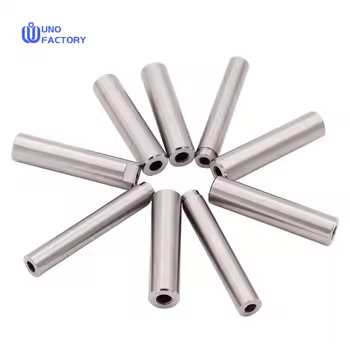Time to read: 6 min

This article delves into the types, grades, characteristics, and applications of stainless steel in rapid prototyping. We will analyze the mechanical and chemical properties of stainless steel and discuss how to select the appropriate stainless steel grades based on different application scenarios.
Introduction to Stainless Steel
Stainless steel is an iron-based alloy known for its exceptional mechanical properties and features such as corrosion and rust resistance. It is widely used across various industries. Its main constituents include iron, carbon, and chromium, with chromium being key to its corrosion and rust-resistant attributes.
Stainless Steel Material Properties
The elements that constitute stainless steel significantly contribute to its many mechanical and chemical properties, making it an essential material in rapid prototyping processes. Here are some general properties of stainless steel:
- Corrosion Resistance: The presence of chromium endows stainless steel with a high level of corrosion resistance, making it widely applicable in various rapid prototyping processes.
- High Tensile Strength: Stainless steel is known for its high tensile strength, making it suitable for products that can withstand stress and carry more weight.
- Hardness and Toughness: Under extreme conditions, stainless steel can endure friction and chafing. It can also absorb energy without cracking or breaking under stress.
- Ductility: Due to its high ductility, stainless steel can withstand the strain involved in the fabrication process without losing its form.
However, cutting or resizing stainless steel can be problematic due to its hardness and fast heat dissipation, which can lead to ruined pieces and costly waste when rework is needed.
Pros and Cons of Stainless Steel
Stainless steel has a wide range of applications in various industries due to its properties. Here are some advantages of using stainless steel in your next project:
- Corrosion Resistance: Chromium is the key alloy responsible for the corrosion resistance of stainless steel.
- High Strength: Certain grades of stainless steel, such as 416 and 431, remain superior as they can withstand stress and carry more weight even at extreme temperatures.
- Low Maintenance: The long-term value of stainless steel outweighs the initial purchase cost, as maintaining it after fabrication is very low.
- Heat Resistance: Certain grades of stainless steel, such as 2205 and 416, can withstand scaling from high temperatures, making them better suited for fabrications likely to be exposed to extreme temperatures.
However, stainless steel also has some disadvantages:
- High Cost: A significant disadvantage of stainless steel is its high cost over other steel types due to the additional alloying elements like nickel, chromium, etc.
- Smudging: Products made from stainless steel are not smudge-proof, reducing the appeal of products made from it.
- Fabrication Challenges: Depending on the stainless steel grades used, fabrication can be a significant challenge.
Types of Stainless Steel
Before deciding on the steel grade for your project, it's crucial to know the various types of stainless steel available. Here are the main types and their grades:
- Ferritic Stainless Steel: Used in engineering applications due to its superior strength.
- Austenitic Stainless Steels: One of the most popular steel grades in the market, known for their exceptional corrosion resistance and non-magnetic properties.
- Martensitic Stainless Steel: Contains a high carbon content and is magnetic. It undergoes hardening via heat treatment.
- Duplex Stainless Steels: Have a structure made mainly from a combination of ferrite and austenite elements, offering outstanding strength and high corrosion resistance.
- Precipitation Hardening Stainless Steel: Can be either martensitic or austenitic, heat treatable, easy to fabricate, magnetic, and very strong.
How to Choose the Right Stainless Steel Grades
Selecting the appropriate stainless steel grade can be challenging. Here are some factors to consider:
- Welding Process: Austenitic stainless steel grades are a good choice for processes requiring good welding ability due to their low carbon content.
- Formability: Austenitic grades like 316, 304, and ferritic grades like 430, 409 are good choices for processes requiring good formability.
- Corrosion Resistance: Austenitic stainless steel grades have high resistance to corrosion due to their high chromium and molybdenum content.
- Heat Treatment: Certain martensitic stainless steels can undergo heat treatment, unlike austenitic and ferritic grades.
- Mechanical Properties: Prioritize properties like strength, toughness, temperature, ductility, and malleability when choosing.
- Cost-effectiveness and Availability: Opt for a grade that offers good corrosion resistance, is readily available, low in cost, and of good quality.
Common Uses and Applications
Stainless steel has a wide range of applications across many industries. Some uses include:
- Food Industry: Used for producing culinary products like sinks, cutlery, plates, and cookware.
- Medical Sector: Used in making surgical equipment and implants.
- Aerospace and Automotive Sector: Used in manufacturing parts of aircraft and vehicles.
Conclusion
Stainless steel materials play a vital role in the manufacturing industry. The type of stainless steel used depends on several factors, such as material properties and grades. This article serves as a stainless steel material selection guide, highlighting different types of stainless steel, their grades, and properties, and providing a guide on choosing the right steel type for your needs.




